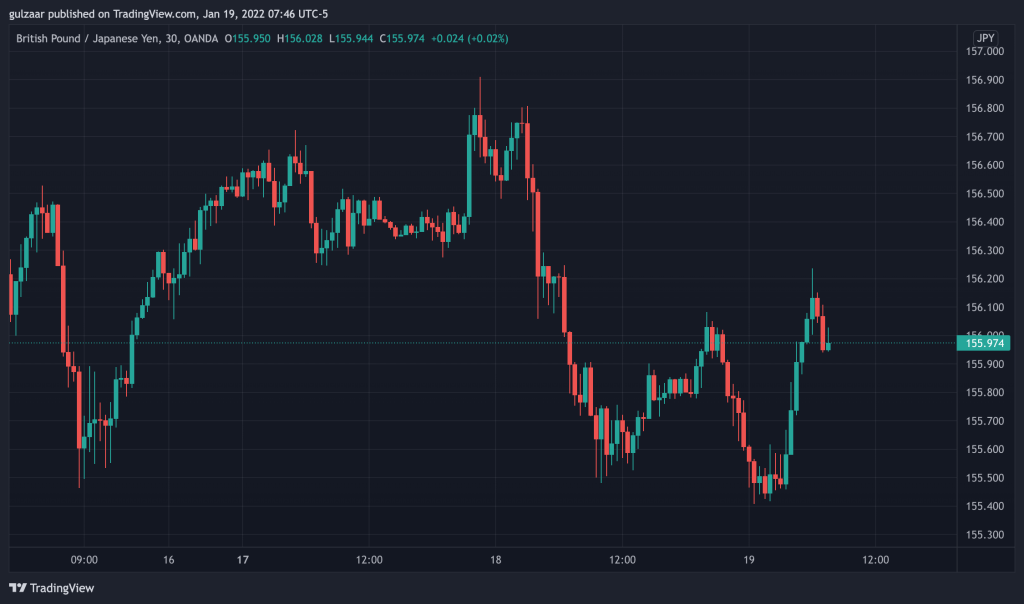The biggest appeal of Forex trading is the potentially massive returns that you can get from trading Forex.
Many times, beginner traders excitedly come into the Forex market only to end up blowing their account and they’re left wondering: is a return on investment really possible with Forex?
How do professional traders make those huge profits they post about on Instagram?
In this post, we’ll talk about realistic returns you can expect from trading Forex, the power of compounding, and the power of consistency.
What is a realistic ROI in Forex trading?
If you have a good trading strategy and strong money management skills, you can make 5% per month or more in Forex trading. There are plenty of Forex traders out there who make 5% and more per month, and you can check these statistics on sites like MyFXBook or on leaderboards of prop trading firms.
An important caveat to note is that Forex is a high risk market, so the 5% number we’re putting forth is an average return and not something you may always see.
Because of the very volatile nature of the Forex market, there will be some months where you’ll make 10 or even 15%, other months where you may lose 3 or 4%, and other months where you just make 1 to 2%.
Profitable trades are profitable because they are consistent.
Forex is a long-term game, so don’t expect to double your account overnight without taking on significant risk and very high leverage.
It’s also worth noting that the average annual return on investment of the S&P500 Index is about 10%. If you can make 5% per month on your trading capital, you’re outperforming the entire US economy by 7 to 8 times!
So don’t get discouraged by potential monthly returns of 5%(or a little less or more).
As you’ll see below, 5% can be a lot.
How to compound gains for bigger returns
While 5% per month may not seem like much, 5% will compound over time to give you a much bigger annual return.
If you’re making 5% per month for 12 months, you’re not just making 5 x 12 or 60% per year, but you’re actually making a lot more thanks to the power of compounding.
Say you started trading Forex in January with an account balance of $1000. For simplicity’s sake, you’re consistently making 5% per month.
By the end of January, your balance is $1050.
In February, you’ll make 5% of your new balance of $1050, so your ending balance will be $1102.50.
In March, your ending balance will be $1157.50.
Fast forward to December and your balance will be $1,796 or a whopping 80% return on investment.
You can also speed up the compounding process by adding more funds to your account in between.
If you were very confident of your trading skills and added $100 (10%) to your balance every month, in 12 months, your closing balance would be $3467 or a 347% return on investment in just one year!
Use this compound calculator to play around with potential numbers.
For simplicity’s sake, the example we chose had your initial investment at just $1000. But that’s not always the case, and you may have more money to deposit in your trading account.
How much money do you need to live off of Forex trading returns?

So if you can make around 5% per month on average, how much money do you need in your trading account to life off of Forex?
The answer is…it depends on your monthly expenses!
Your monthly expenses will vary depending on where you live in the world. If you’re in an Asian country like India, Pakistan, or Thailand, $1000 USD may be enough to live very comfortably!
If you’re in a European country(Australia and New Zealand included) or the US and Canada, you’ll need a lot more.
So first, determine how much money you need to earn per month. Let’s say you’re a single person living in the United States and you want to earn $4000 per month.
$4000 is 5% of $80,000, so you’ll need trading capital of at least $80,000 in order ot reach your income goals.
At this point, you may be thinking: “Well, if I had $80,000 lying around, I would not be in this position!”
That’s where the second mindset comes in: should you treat Forex as a side income or a full time job?
Treating Forex as a side income vs a full time job
Trading Forex as your sole source of income is very stressful. Forex is a zero sum game, so if you’re not winning, you’re losing.
That can put a lot of stress even on the most experienced traders, and stress leads to poor investing deicisions and ultimately blowing a lot more money than you had originally planned.
Rayner Teo, a popular YouTuber and Forex educator gives a very useful perspective on how to think about how much money you can make with Forex trading.
He suggests that when you start with a small account, consider one or two expenses that you wish to cover with your trading.
For example, let’s say your mobile and electricity bill combined is around $150 per month.
To start, just focus on making that $150 per month and figure out your trading plan accordingly.
As you grow your account, you can always cover more expenses from your trading profits.
Forex for wealth generation
Another option is to only utilize Forex trading for generating wealth as an investment. As you saw above, thanks to the power of compounding, you can make a significantly better return on Forex than other investment vehicles.
Does scalping or swing trading give better returns?
How long do you need to sit at the charts to make enough money to get a good return on your original investment?
Forex traders are usually split into day traders who scalp the markets and swing traders that hold trades for longer positions.
Naturally, scalpers will place trades much more often than swing traders.
In my experience, the nature of the beast is such that scalping and swing trading can both yield similar Forex returns, monthly.
How?
Let’s say you are a scalper and you make an average of 15 pips per day. Over the course of roughly 20 days per month, you’ll make 300 pips.
Your friend is a swing trader and places maybe 1 trade per week, averaging about 75 to 100 pips per trade.
In one month, they’ll also make nearly the same amount of pips.
Whether you decide to scalp or swing trade depends entirely upon your lifestyle and time commitments.
Why you should focus on consistency
In the example above, you may have noticed that I only mentioned pips and I did not mention a dollar amount.
At the end of the day, your currency trading strategy should work in a way to deliver a percentage return per month, whether that’s 1, 2, 3, 4, 5, or even 10%.
Once you get really good at getting consistent returns, it doesn’t matter if you’re trading with $1,000 in capital or $1,000,000. You’ll still be able to get your 5% every month.
You can see how lucrative this can be: 5% of $1,000 is $50, but 5% of $1,000,000 is $50,000!
How your risk-reward ratio influences your trading returns
One of the most important components of trading Forex markets is your risk to reward ratio. Most traders opt for at least a 1:2 risk to reward per trade, but it can vary from position to position. Sometimes you may get lucky and find a 1:3 or even 1:5 trade.
Profitable traders know that the market is a probability game, so you need to tip the probabilities in your favor as much as possible.
If you consistently take 1:3 trades, you can be wrong on two consecutive trades and still remain in profit.
You’ll also be able to profit that much more from every single trade, too. A 1:3 trade means if you’re risking 2% of your trading account on a trade, you’re looking to make 6% of your trading account in return.
That means you can take just one trade and cover your profit target for the whole month!
Of course, 1:3 trades are comparatively rarer than 1:1 or 1:1.5 trades, so if you do happen to profit 6% in one trade, consider it a lucky day. You can be a little more courageous and risk a little more on the next trade.
How to get more trading capital
Trading forex requires a lot of capital to be sufficiently profitable, and not everyone has enough money to use as capital to trade for a living.
Even though Forex brokers offer huge amounts of leverage, it’s still not going to be enough to meet your targetrs.
So as a Forex trader with a small account balance, what can you do?
There are plenty of proprietary trading firms that you can sign up to trade with. Some of these firms have thousands of Forex traders working with them and are paying out hundreds of thousands of dollars per month.
In a prop firm, you’ll have to pass a trading challenge to hit a particular profit target without going beyond a set drawdown.
If you’re able to pass, you’ll be able to start trading with a lot of capital to make enough income on a monthly basis to cover the bulk of your expenses.
You can also think about getting investors on board, but convincing people, doing the paperwork, and answering to investors is a hassle, especially in the Forex market where losses are inevitable at some point.
If you trade with a prop firm, the worst thing that can happen is you lose your trading account, after which you can just sign up again.
Conclusion
Foreign exchange trading can definitely give you a realistic return of 5% per month or more, but you have to be consistent and follow your risk management rules.
Remember, not every month will be the same. Some months you may make 10 or 15%, and in other months, you may be in the red a little bit.
As long as your risk is under control and you are consistent, you can achieve a really respectable average annual return.
